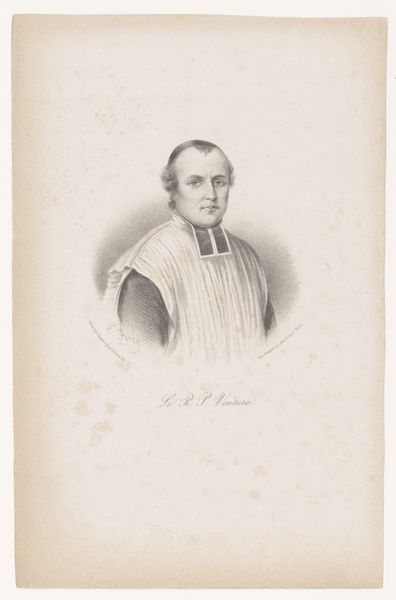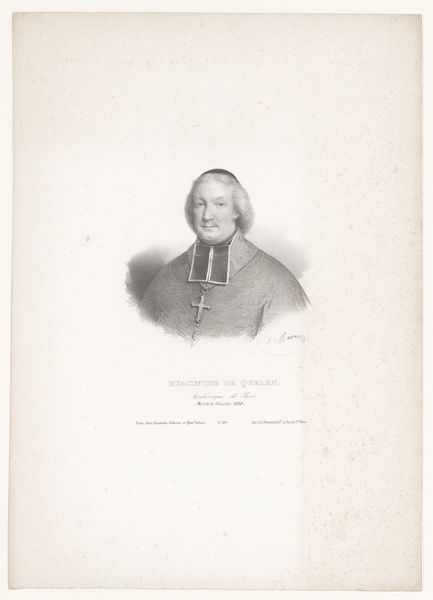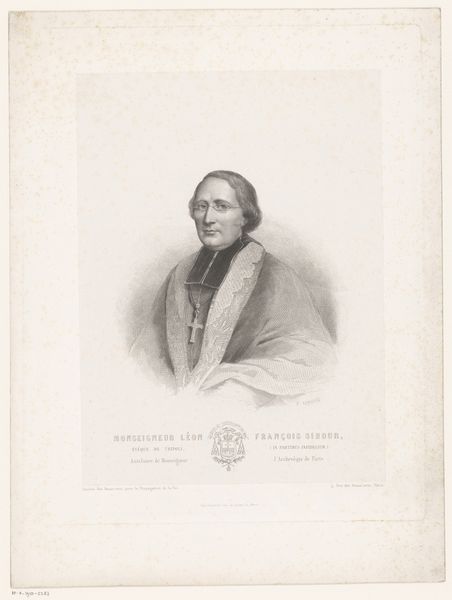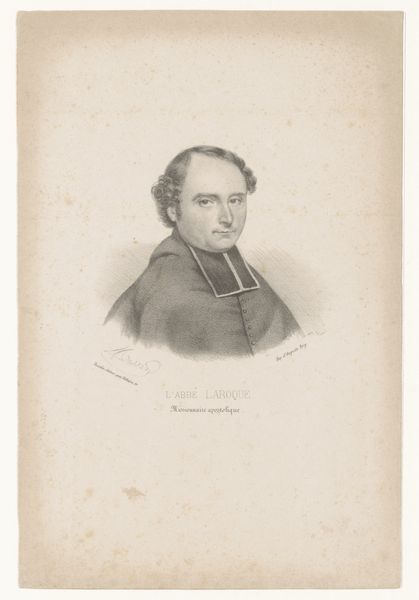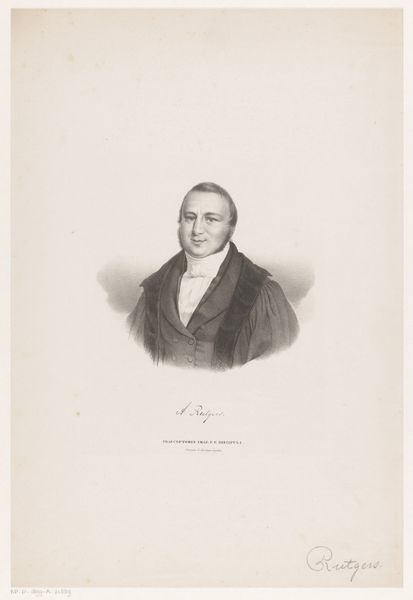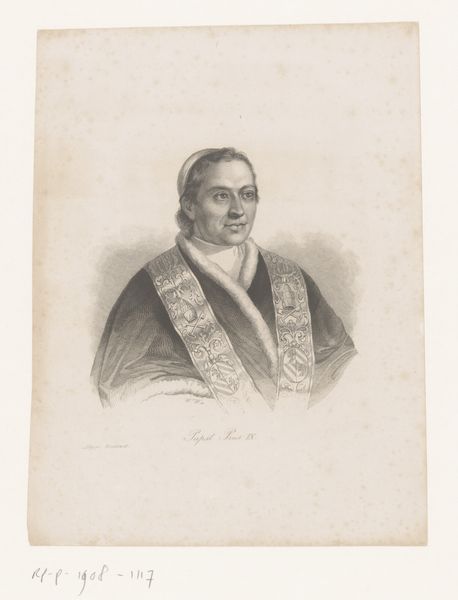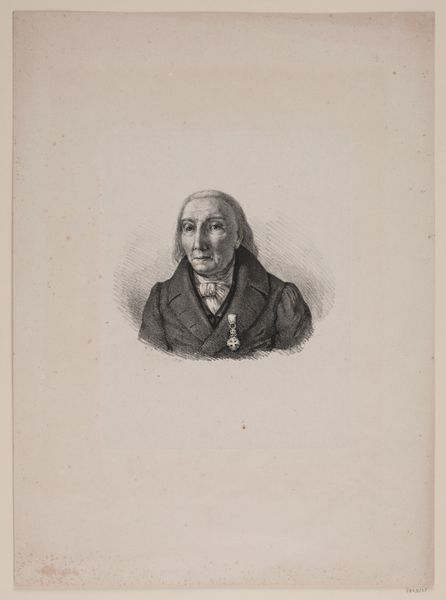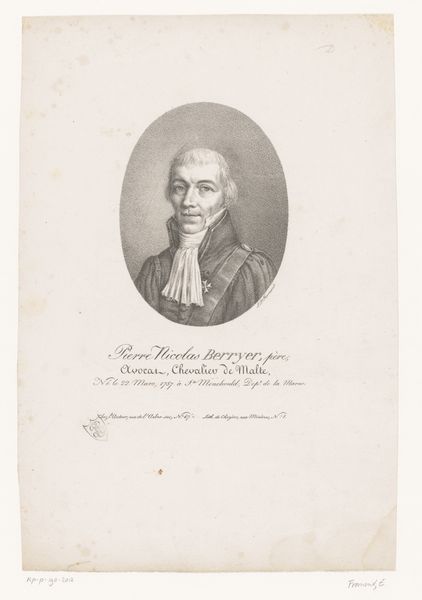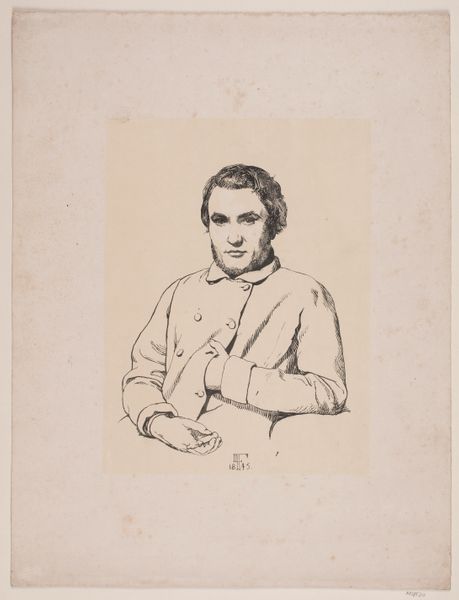
print, engraving
#
portrait
# print
#
academic-art
#
engraving
#
realism
Dimensions: height 275 mm, width 178 mm
Copyright: Rijks Museum: Open Domain
Curator: Let's consider this compelling portrait. It's an engraving titled "Portret van Théodore Ratisbonne," crafted in 1852 by Alphonse Farcy. Editor: The somber tone strikes me first. It's restrained but there's depth – perhaps born from the medium itself. An engraving requires precise labor and the tonal range achieved through many lines. What about this Ratisbonne interests you, historically? Curator: Théodore Ratisbonne was, in his time, a significant figure in the conversion movement from Judaism to Christianity. This print offers insights into the institutional presentation of religious figures during the 19th century. We can consider how prints like this served as propaganda or as commemorative pieces within specific religious circles. Editor: The subtle detailing of his vestments indicates the labor invested here. The materiality speaks of precision, the marks physically etching into the metal printing plate and the mass production allowing wide distribution among the population. Was Farcy renowned at this time for his skill with this medium? Curator: Yes, Farcy was a well-regarded engraver, and prints such as these were crucial for disseminating imagery and constructing social identities. Engravings served an important public role by offering affordable representations that influenced opinion and awareness. How do you perceive the effect that repeated imagery like this might have had on 19th-century consumers? Editor: We cannot dismiss the potential social influence this image possessed, but its physical presence is what anchors the meaning. A constant hum of repetitive tasks bringing the piece to its material conclusion. An intentional manipulation, revealing, concealing, to convey a specific purpose. Curator: Exactly. And consider how the institutional church utilized such imagery. Editor: Looking closely at this work offers so much insight into labor and image production during its period. Curator: Yes, it's been useful to reconsider Ratisbonne and his place within history and its influence.
Comments
No comments
Be the first to comment and join the conversation on the ultimate creative platform.
